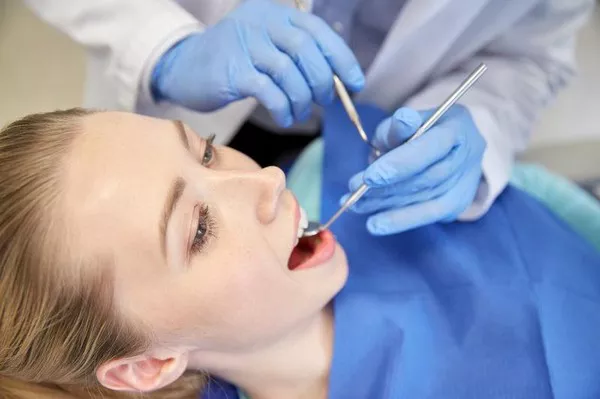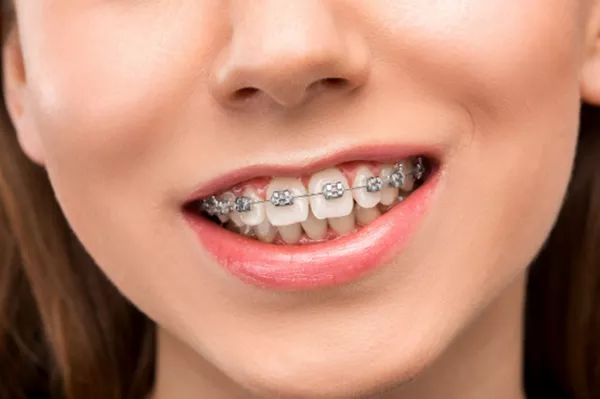Orthodontics is a specialized branch of dentistry focused on the diagnosis, prevention, and treatment of dental and facial irregularities. It involves correcting misaligned teeth, bite issues, and jaw alignment problems to improve both the function and aesthetics of the smile. In this article, we will delve into the various aspects that fall under orthodontic treatment, exploring the different conditions and procedures involved in achieving a properly aligned and harmonious smile.
I. Common Orthodontic Conditions
A. Malocclusions:
- Overbite: When the upper teeth significantly overlap the lower teeth.
- Underbite: When the lower teeth protrude beyond the upper teeth.
- Crossbite: When the upper and lower teeth do not align properly.
- Open Bite: When there is a space between the upper and lower teeth when the mouth is closed.
- Crowding: When there is insufficient space in the jaw for all teeth to fit properly.
- Spacing: When there are noticeable gaps between teeth.
B. Jaw Alignment Issues:
- Overjet: When the upper front teeth protrude excessively forward.
- Underjet: When the lower front teeth are positioned too far forward compared to the upper front teeth.
- Misaligned Midline: When the center lines of the upper and lower teeth do not align.
C. Other Dental Irregularities:
- Teeth Rotation: When teeth are twisted or rotated out of their ideal positions.
- Transposition: When teeth are positioned in abnormal locations in the dental arch.
II. Orthodontic Treatment Options
A. Braces:
- Traditional Braces: Metal or ceramic brackets attached to the teeth with archwires that apply gentle pressure to gradually move teeth into alignment.
- Self-Ligating Braces: Similar to traditional braces but with specialized brackets that do not require elastic or metal ties.
- Lingual Braces: Brackets and wires placed on the inside (lingual) surfaces of the teeth, making them virtually invisible from the outside.
B. Clear Aligners:
- Invisalign: Clear, removable aligners that are custom-made and gradually shift teeth into the desired position.
- ClearCorrect: Similar to Invisalign, utilizing clear aligners for discreet orthodontic treatment.
C. Other Orthodontic Appliances:
- Headgear: External appliance used to correct overbites or to guide jaw growth.
- Palatal Expander: Widens the upper jaw to correct crossbites and create space for crowded teeth.
- Retainers: Custom-made devices worn after orthodontic treatment to maintain tooth alignment.
III. Benefits of Orthodontic Treatment
A. Improved Oral Health:
- Easier Oral Hygiene: Properly aligned teeth are easier to clean, reducing the risk of dental problems such as cavities and gum disease.
- Balanced Bite: Correcting malocclusions improves chewing and biting function, reducing strain on the jaw joints.
B. Enhanced Aesthetics:
- Straighter Smile: Orthodontic treatment aligns teeth, enhancing the appearance of the smile and boosting self-confidence.
- Facial Harmony: Proper alignment of the jaws can improve facial aesthetics and symmetry.
C. Long-Term Oral Function:
- Speech Improvement: Addressing misaligned teeth can improve speech clarity and pronunciation.
- Tooth Wear Protection: Correcting bite issues can prevent premature tooth wear and damage.
IV. Considerations for Orthodontic Treatment
A. Age Considerations:
- Children: Orthodontic treatment often begins during childhood or adolescence when the jaws are still developing, making it an ideal time to address orthodontic issues.
- Adults: Orthodontic treatment can be effective for adults too, although it may take longer and additional considerations such as gum health and pre-existing dental work need to be taken into account.
B. Duration of Treatment:
- Treatment Length: Orthodontic treatment duration varies depending on the complexity of the case and the chosen treatment option. It can range from several months to a few years.
- Compliance and Follow-up: Consistent wear of orthodontic appliances and regular follow-up visits are essential to achieve the desired results within the estimated timeframe.
C. Maintenance and Care:
- Oral Hygiene: Maintaining good oral hygiene practices is crucial during orthodontic treatment to prevent tooth decay and gum problems.
- Dietary Considerations: Certain foods, such as sticky or hard items, should be avoided to prevent damage to orthodontic appliances.
- Retention Phase: After active treatment, wearing retainers as prescribed by the orthodontist is necessary to maintain the achieved results.
V. Collaborative Approach
A. Orthodontist-Dentist Partnership: Orthodontists often work closely with general dentists to ensure comprehensive oral health care throughout the treatment process.
B. Multidisciplinary Approach: In complex cases, orthodontists may collaborate with other dental specialists, such as oral surgeons or periodontists, to achieve the best possible outcomes.
C. Patient Involvement: Open communication between the patient, orthodontist, and other dental professionals is essential for effective treatment planning and successful results.
VI. Financial Considerations
A. Cost Factors: Orthodontic treatment costs can vary depending on the complexity of the case, chosen treatment option, and geographic location.
B. Insurance Coverage: Dental insurance plans may partially cover orthodontic treatment, but it’s important to understand the specific coverage and limitations.
C. Flexible Financing: Many orthodontic practices offer flexible payment plans or financing options to make treatment more affordable and accessible.
Conclusion
Orthodontics encompasses a range of conditions, treatment options, and considerations that contribute to achieving a healthy, well-aligned smile. By addressing orthodontic issues, individuals can benefit from improved oral health, enhanced aesthetics, and better overall oral function. Collaboration between orthodontists, dentists, and patients is key to creating a customized treatment plan and ensuring successful outcomes. Understanding the factors involved in orthodontic treatment, such as age considerations, treatment duration, maintenance, and financial aspects, empowers individuals to make informed decisions about their oral health. With proper care and adherence to treatment recommendations, patients can enjoy the long-lasting benefits of a beautifully aligned smile.
Related Topics:































